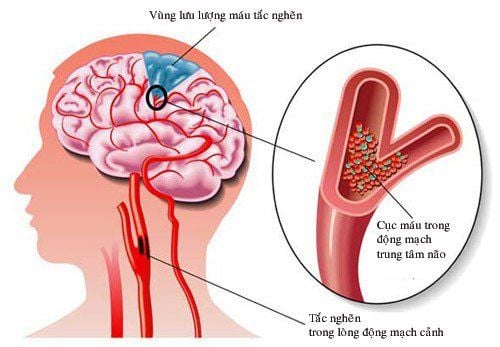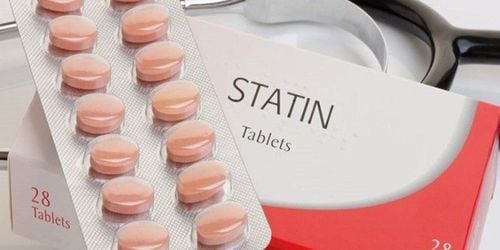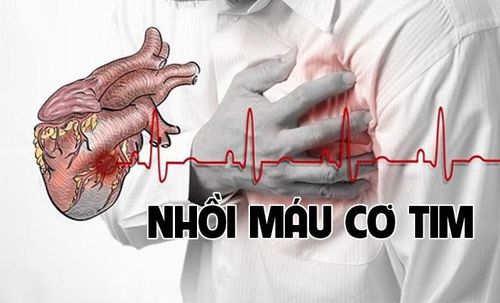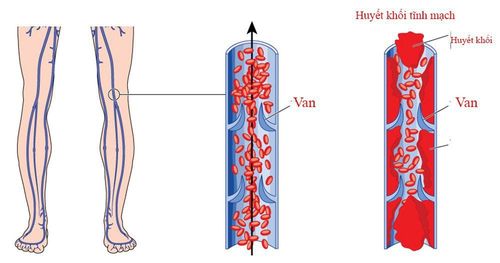This is an automatically translated article.
The article is professionally consulted by Master, Doctor Pham Van Hung - Interventional Cardiologist - Department of Medical Examination & Internal Medicine - Vinmec Danang International HospitalAcute myocardial infarction is the leading cause of death in developed and developing countries, the use of fibrinolysis in acute myocardial infarction as early as 12 hours after onset of the disease significantly reduces the risk of acute myocardial infarction. 18% chance of death due to acute myocardial infarction.
1. Mechanism of action of fibrinolytic drugs
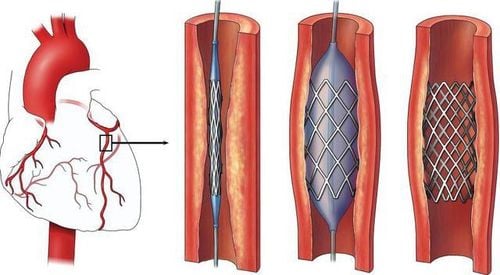
Myocardial infarction is a condition in which the heart muscle is deprived of local nourishment due to the narrowing of the coronary arteries. If not detected and treated promptly, it leads to necrosis of cardiac muscle cells, causing a variety of arrhythmias and death.
ST-elevation myocardial infarction is the most important and dangerous form of acute coronary syndrome, due to the rupture of atherosclerotic fragments, thereby activating coagulation factors, causing thrombus formation in the lumen, along with With that is the phenomenon of vasoconstriction resulting in a sudden decrease in the diameter of the coronary arteries. In patients with ST-elevation myocardial infarction, the thrombus completely occludes the coronary lumen (>90% occlusion), so reperfusion of the myocardium in this case is very important. important, it should be done soon.
The fibrinolytic agents act primarily on the activation of plasminogen to plasmin at the site of the thrombus causing the thrombosis to cause clot lysis. In addition, fibrinolytic drugs also disrupt some important clotting factors such as prothrombin. Thereby breaking the myocardial reperfusion thrombus.
2. Advantages and disadvantages of taking thrombolytic drugs
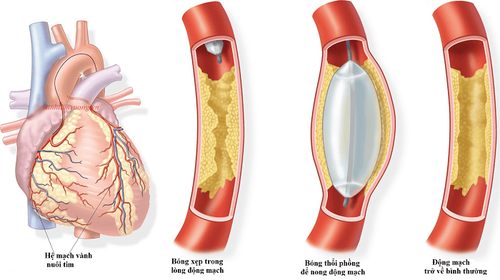
2.1 Advantages
Thrombolysis is a popular treatment for myocardial infarction because it is readily available and fast. The benefit in reducing mortality is greater in patients with anterior myocardial infarction, diabetes, low blood pressure, tachycardia, the benefit of treatment is maximized when used early, the drug is only useful when used before 12 hours and preferably less than the first 3 hours. Non-invasive to the patient's body. Lower cost compared to other treatments. 2.2 Cons
Re-circulation after about 60 - 90 minutes. The risk of reocclusion can lead to a heart attack. Risk of intracranial hemorrhage with 40% mortality. 15-20% of patients have contraindications to thrombolytics. The patient may have a drug allergy or anaphylaxis. The patient may have an arrhythmia.
3. Indications and contraindications of fibrinolytic therapy

3.1 Indications In case of acute myocardial infarction, the time from symptom onset to drug administration is less than 12 hours and preferably less than 3 hours.
3.2 Absolute Contraindications
History of intracranial hemorrhage. Known cerebrovascular injury (arteriovenous malformation,...) Detected intracranial malignancy (primary or metastatic). Ischemic stroke (cerebral infarction) within 3 months except for new ischemic stroke less than 3 hours. Suspected aortic dissection. On acute bleeding or on dialysis (except menstruation). Severe head and face trauma within 3 months. Disorders of clotting factors. Acute pericarditis. Acute lung disease. Relative
History of chronic, severe, and difficult-to-control hypertension. Have severe uncontrolled hypertension (systolic blood pressure >180 mmHg or diastolic blood pressure >110 mmHg). History of ischemic stroke over 3 months, dementia, or intracranial disease without absolute contraindications. Prolonged trauma or CPR (more than 10 minutes). Major surgery within the past 3 weeks. Recent internal bleeding (within 2-4 weeks). Perforated blood vessels that cannot be stopped. Stomach ulcer is progressing. Pregnant women. On anticoagulants: High INR, high risk of bleeding.
4. Things to pay attention to when using thrombolytic drugs
Examining and identifying the patient's pathology quickly, do not delay the use of the drug because after 12 hours, the beneficial effect of the treatment is not much. Only fibrinolytic therapy should be given if the risk of bleeding threatens. Life-threatening does not exceed 4% based on bleeding risk factors Patients on fibrinolytic therapy continue to have chest pain or continue to present with myocardial ischemia on electrocardiogram (ST elevation reduction to <50% ) within 60-90 minutes of starting the infusion should be considered urgent coronary angiography and early vascular intervention. Because a common complication of fibrinolytic therapy is bleeding, of which intracranial hemorrhage is 0.7-0.9%, any patient during or after treatment presents with a sudden change in his or her condition. Neuropsychiatric patients should undergo a head CT scan and all anticoagulation and fibrinolysis should be discontinued. Limit intravenous injection and avoid arterial puncture within 24 hours of initiating fibrinolysis. Patients with acute myocardial infarction need absolute bed rest; take oxygen, take pain relievers, use coronary artery vasodilators. Nutrition guidelines for patients: quit smoking, eat low cholesterol, limit fat, salt, snack, avoid constipation, eat enough energy. In the context of vascular intervention is not popular, using fibrinolysis in the treatment of myocardial infarction is a good choice due to its popularity and effectiveness. It is important to quickly detect and diagnose drug use as soon as possible in patients who have no contraindications to thrombolytics.
It can be seen that the examination, screening and diagnosis of cardiovascular diseases is very important, including urgent cardiovascular emergency measures. The method of fibrinolytic therapy for patients with acute myocardial infarction at Vinmec International Hospital has a success rate of over 95%. Thrombolytic drugs are used for patients with myocardial infarction with indications under the guidance and close monitoring of Cardiologists, experienced and modern equipment.
Please dial HOTLINE for more information or register for an appointment HERE. Download MyVinmec app to make appointments faster and to manage your bookings easily.






